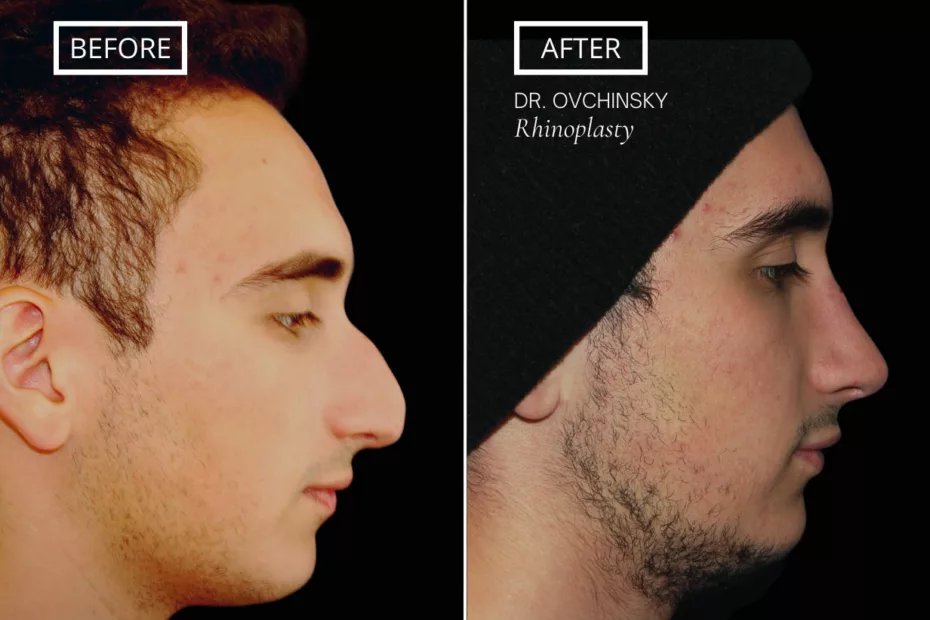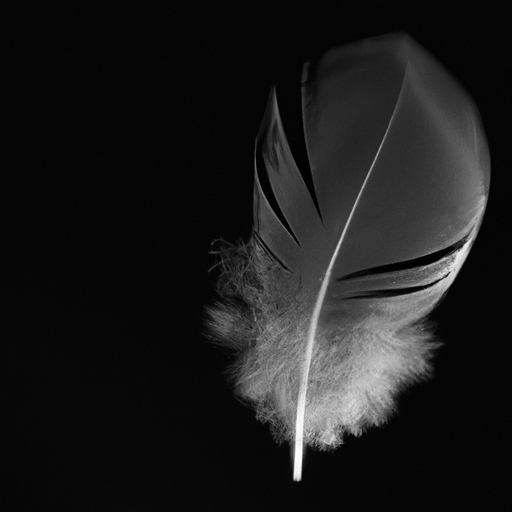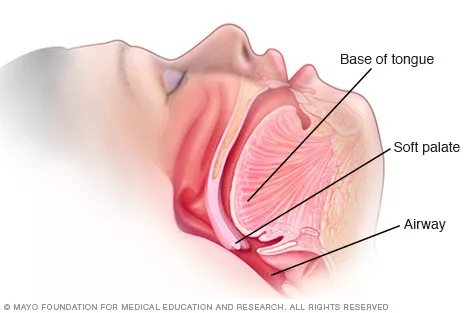Have you ever experienced difficulty breathing through your nose? Whether it’s due to a deviated septum, nasal congestion, or any other structural issues, breathing problems can greatly impact your quality of life. Luckily, there is a solution – rhinoplasty. Beyond its cosmetic benefits, rhinoplasty can effectively improve your breathing by addressing the underlying causes of nasal obstruction. In this article, we will explore how rhinoplasty can help alleviate snoring and enhance your overall respiratory function. So, if you’re tired of struggling to catch your breath, read on to discover the transformative benefits of this procedure.
Understanding Rhinoplasty
Definition of rhinoplasty
Rhinoplasty refers to a surgical procedure that aims to reshape and reconstruct the nose. It can be performed for both cosmetic and functional purposes. While many people opt for rhinoplasty to enhance the appearance of their nose, it can also be a solution for individuals who experience difficulties with breathing due to nasal irregularities or blockages.
Origins and historical context
The origins of rhinoplasty can be traced back to ancient times. The first documented evidence of nasal surgery dates back to ancient Egypt, where papyrus scrolls reveal that early Egyptians were already using surgical techniques to repair nasal deformities. Over the centuries, different cultures and civilizations explored and developed their own methods of rhinoplasty, including the Indian method described in the Sushruta Samhita, an ancient Indian medical text. These early practices laid the foundation for the modern techniques that are used today.
Modern practices and advancements
With the advancement of medical knowledge and technology, rhinoplasty has evolved significantly over the years. Today, it is a sophisticated surgical procedure that takes into account both aesthetic and functional aspects of the nose. Surgeons now have access to advanced techniques, such as computer imaging and 3D printing, which allow for a more precise and individualized approach to rhinoplasty. These advancements have made it possible to achieve better outcomes and minimize the risks and complications associated with the procedure.
The Connection Between Breathing and Nasal Shape
Anatomy of the nose and breathing
To understand the relationship between breathing and nasal shape, it is important to have a basic understanding of the anatomy of the nose. The nose consists of two main parts: the external structure and the internal nasal passages. The external structure includes the bridge, tip, and nostrils, while the internal nasal passages are responsible for airflow and breathing.
How nasal shape affects breathing
The shape and structure of the nose can have a significant impact on a person’s ability to breathe freely. A deviated septum, for example, occurs when the wall that separates the nostrils is displaced or crooked. This can lead to nasal congestion, difficulty in breathing through one or both nostrils, and even snoring. Other nasal irregularities, such as enlarged turbinates or nasal polyps, can also obstruct the airflow and cause breathing problems.
Common nasal irregularities and breathing problems
There are several common nasal irregularities that can contribute to breathing difficulties. These include a deviated septum, nasal valve collapse, turbinate hypertrophy, and nasal polyps. A deviated septum is a condition in which the nasal septum – the thin wall between the nostrils – is crooked or displaced, obstructing normal airflow. Nasal valve collapse occurs when the cartilage in the nasal passages weakens or collapses, causing narrowing and difficulty in breathing. Turbinate hypertrophy refers to the enlargement of the nasal turbinates, which are responsible for filtering and humidifying the air we breathe. Nasal polyps are soft growths that can develop in the nasal passages, blocking the airflow and causing congestion.
How Rhinoplasty Improves Breathing
Rhinoplasty procedures focused on improving breathing
Rhinoplasty procedures designed to improve breathing focus on addressing the specific nasal irregularities that contribute to breathing problems. Surgeons will assess the patient’s condition and determine the appropriate techniques to correct and enhance the nasal structure. This may involve straightening a deviated septum, strengthening the nasal valves, reducing enlarged turbinates, or removing nasal polyps.
Biological principles of improved breathing post-rhinoplasty
After rhinoplasty, improvements in breathing can be attributed to the correction of structural abnormalities that were obstructing the airflow. By addressing these issues, rhinoplasty can restore proper nasal function and enhance airflow. The precise techniques used during the procedure will depend on the patient’s individual needs, and the surgeon’s expertise and experience.
Real-life cases: before and after
Real-life cases of individuals who have undergone rhinoplasty for breathing improvement provide valuable insight into the potential benefits of the procedure. Many patients report a significant improvement in their ability to breathe freely through their nose following surgery. Breathing becomes easier, nasal congestion is reduced, and snoring can be alleviated. These outcomes can have a profound impact on a person’s overall quality of life, contributing to better sleep, increased energy levels, and improved physical well-being.
Consideration for Rhinoplasty
Deciding on rhinoplasty for improved breathing: Questions to ask your doctor
If you are considering rhinoplasty for improved breathing, it is essential to have a thorough discussion with your doctor to determine if the procedure is right for you. Some important questions to ask your doctor include:
- What are the potential benefits and risks of rhinoplasty for improving breathing?
- How experienced are you in performing rhinoplasty procedures for functional purposes?
- Can you provide examples of previous patients who have undergone rhinoplasty for breathing improvement?
- What are the expected outcomes and the recovery period?
- Are there any non-surgical alternatives that could address my breathing concerns?
By asking these questions, you can gain a better understanding of the procedure and make an informed decision about whether rhinoplasty is the right choice for you.
Evaluating your condition: Tests and diagnostics
To determine the underlying causes of your breathing difficulties, your doctor may perform various tests and diagnostics. These may include a nasal endoscopy, which allows the doctor to visualize the nasal passages and identify any abnormalities, or nasal airflow tests to measure the flow of air through your nose. These evaluations will help your doctor develop a personalized treatment plan and determine if rhinoplasty is the most suitable option for you.
Physical and mental preparation for a rhinoplasty
Preparing for rhinoplasty involves both physical and mental preparation. It is important to follow your doctor’s instructions regarding any medications to avoid before the surgery, as well as any pre-operative tests or evaluations that may be necessary. Additionally, it is crucial to have realistic expectations and understand the potential risks and benefits associated with the procedure. Talking to your doctor and addressing any concerns or fears you may have can help alleviate anxiety and ensure a smooth and positive surgical experience.
The Process of Rhinoplasty
Understanding the surgical process
The surgical process of rhinoplasty typically involves several steps. First, the surgeon will make incisions or access the nasal structures through internal incisions. The specific technique used will depend on the individual case and the goals of the procedure. The surgeon will then reshape and reconstruct the nasal structures to improve breathing and/or enhance the aesthetic appearance. Once the desired changes are made, the incisions will be closed, and the patient will be moved to a recovery area.
Anesthesia and surgery methods
Rhinoplasty can be performed under general anesthesia or local anesthesia with sedation, depending on the complexity of the procedure and the patient’s preferences. The surgeon will discuss the available options and determine the most appropriate anesthesia method for each individual case. Surgery methods can vary based on the specific techniques used, which may include open rhinoplasty or closed rhinoplasty. Open rhinoplasty involves making an incision on the tissue separating the nostrils, while closed rhinoplasty involves incisions made within the nostrils, leaving no visible scars.
Recovery and what to expect post-surgery
Recovery from rhinoplasty will vary for each patient, but there are general guidelines to follow. Immediately after the surgery, patients will be monitored in a recovery area before being released to go home. Swelling and bruising are common after rhinoplasty and can last for several weeks. Pain and discomfort can be managed with prescribed medications. It is essential to follow all post-operative instructions provided by the surgeon, including rest, elevation, and avoiding activities that could impact the healing process. Most patients can expect to see noticeable improvements in their breathing within a few weeks or months after surgery.
Potential Risks and Complications
Common risks and complications
Like any surgical procedure, rhinoplasty does carry some risks and potential complications. These can include:
- Infection
- Bleeding
- Adverse reactions to anesthesia
- Difficulty breathing through the nose
- Change in sensation or numbness
- Unsatisfactory cosmetic result
It is important to note that serious complications are rare, and the majority of patients experience successful outcomes with minimal issues. Your surgeon will discuss the potential risks and complications with you during the consultation process to ensure you have a clear understanding of what to expect.
Handling potential issues and complications
If any issues or complications arise after rhinoplasty, it is essential to contact your surgeon immediately. They will be able to provide guidance and appropriate medical care to address the problem. Communication with your surgeon throughout the recovery process is crucial to ensure the best possible outcome and to address any concerns or complications promptly.
Reducing risks: tips and advice
While some risks are unavoidable, there are steps you can take to reduce the likelihood of complications after rhinoplasty. It is important to carefully follow all pre and post-operative instructions provided by your surgeon. This includes avoiding smoking, as it can interfere with the healing process, and taking any prescribed medications as directed. It is also crucial to communicate openly with your surgeon and report any concerns or changes in your condition promptly.
Rhinoplasty yet Snoring Persists
Possible reasons for persistent snoring after rhinoplasty
In some cases, individuals may still experience snoring even after undergoing rhinoplasty. This can be due to various factors, including:
- Remaining nasal obstructions not addressed during surgery
- Structural abnormalities not fully corrected
- Underlying issues such as sleep apnea or other respiratory conditions
If snoring persists after rhinoplasty, it is important to consult with your doctor to determine the cause and explore potential solutions.
When to consult your doctor about continued snoring
If you continue to snore after undergoing rhinoplasty, it is advisable to consult with your doctor. They will be able to assess the situation and determine if further intervention or evaluation is necessary. Your doctor may recommend additional treatments or refer you to a sleep specialist for further evaluation, particularly if sleep apnea or other underlying respiratory conditions are suspected.
Understanding sleep apnea: Is it related to your snoring?
Sleep apnea is a serious sleep disorder characterized by interrupted breathing during sleep. It can be related to snoring, among other symptoms, but not all snorers have sleep apnea. During rhinoplasty, if sleep apnea is suspected, your doctor may investigate further to determine if any structural abnormalities in the nose are contributing to the condition. In some cases, additional treatments or interventions may be necessary to address sleep apnea and improve overall breathing and quality of sleep.
Life after Rhinoplasty: Improved Breathing and Quality of Life
Effects of improved breathing on daily life
The effects of improved breathing after rhinoplasty can have a significant impact on a person’s daily life. Breathing becomes easier and more comfortable, allowing for better sleep and increased energy levels throughout the day. With improved nasal airflow, individuals can engage in physical activities without feeling breathless or fatigued. Additionally, the aesthetic improvements achieved through rhinoplasty can boost self-confidence and improve overall quality of life.
Promoting long-term success: Maintenance tips
To ensure long-term success after rhinoplasty, it is important to follow the post-operative care instructions provided by your surgeon. This typically includes avoiding activities that may impact the healing process, such as contact sports or nose-blowing with force. Keeping the nasal passages clean and moisturized using saline sprays can also help maintain optimal nasal function. Regular follow-up appointments with your surgeon will allow for monitoring of the healing process and address any concerns that may arise.
Patient testimonials: Living with improved breathing post-rhinoplasty
Many patients who have undergone rhinoplasty for improved breathing report positive experiences and outcomes. Patient testimonials often highlight the significant improvement in breathing and overall quality of life they have experienced. Individuals often express relief from nasal obstruction, decreased snoring, and improved sleep quality. These testimonials serve as a testament to the potential benefits of rhinoplasty for breathing improvement.
Rhinoplasty vs. Alternatives: Which is Best for Improved Breathing
Understanding the alternatives of Rhinoplasty
While rhinoplasty is a widely recognized and effective method for improving breathing, there may be alternative options to consider in certain cases. Some alternatives to rhinoplasty for improved breathing may include:
- Septoplasty: A surgical procedure specifically focused on correcting a deviated septum.
- Turbinate reduction: A procedure that reduces enlarged turbinates to improve nasal airflow.
- Nasal valve repair: Specifically targeting the nasal valves to strengthen their function and reduce obstruction.
It is crucial to consult with your doctor to determine which treatment option is best suited for your individual needs and condition.
Comparative analysis: Rhinoplasty vs. alternatives
When comparing rhinoplasty to alternative procedures, it is essential to consider factors such as the specific nasal irregularities underlying the breathing problems, the desired aesthetic outcomes, and the overall goals of the patient. Rhinoplasty is a comprehensive procedure that can address both functional and aesthetic concerns, making it a versatile option for many individuals. However, in some cases, a more focused procedure, such as septoplasty or turbinate reduction, may be more appropriate.
Making a decision: Which is best for your condition?
Ultimately, the best treatment option for improved breathing will depend on your individual condition and goals. Consulting with an experienced surgeon who specializes in functional rhinoplasty will allow for a thorough assessment and discussion of your specific needs. The surgeon will be able to provide expert advice and guide you in making an informed decision about the most appropriate treatment option.
Frequently Asked Questions on Rhinoplasty for Breathing Improvement
Typical questions about rhinoplasty for improved breathing
- How long does it take to recover after rhinoplasty for breathing improvement?
- Will my insurance cover the cost of rhinoplasty for functional purposes?
- Can rhinoplasty improve snoring?
- Is rhinoplasty painful?
- Are the results of rhinoplasty permanent?
Dealing with misconceptions about rhinoplasty
Rhinoplasty is a procedure that is often surrounded by misconceptions. Common misconceptions include the idea that rhinoplasty is only for cosmetic purposes and that it always involves significant pain and a long recovery period. By addressing these misconceptions and providing accurate information, individuals considering rhinoplasty for improved breathing can make informed decisions based on facts and reliable knowledge.
Consulting professionals: Where to get help
If you are considering rhinoplasty for improved breathing, consulting with a qualified and experienced surgeon is crucial. Seek recommendations from trusted sources, such as your primary care physician or friends who have undergone successful rhinoplasty procedures. Research potential surgeons, review their qualifications and experience, and schedule consultations to discuss your specific concerns and goals. A skilled surgeon will be able to provide guidance, answer any questions, and work with you to develop an individualized treatment plan tailored to your needs.





